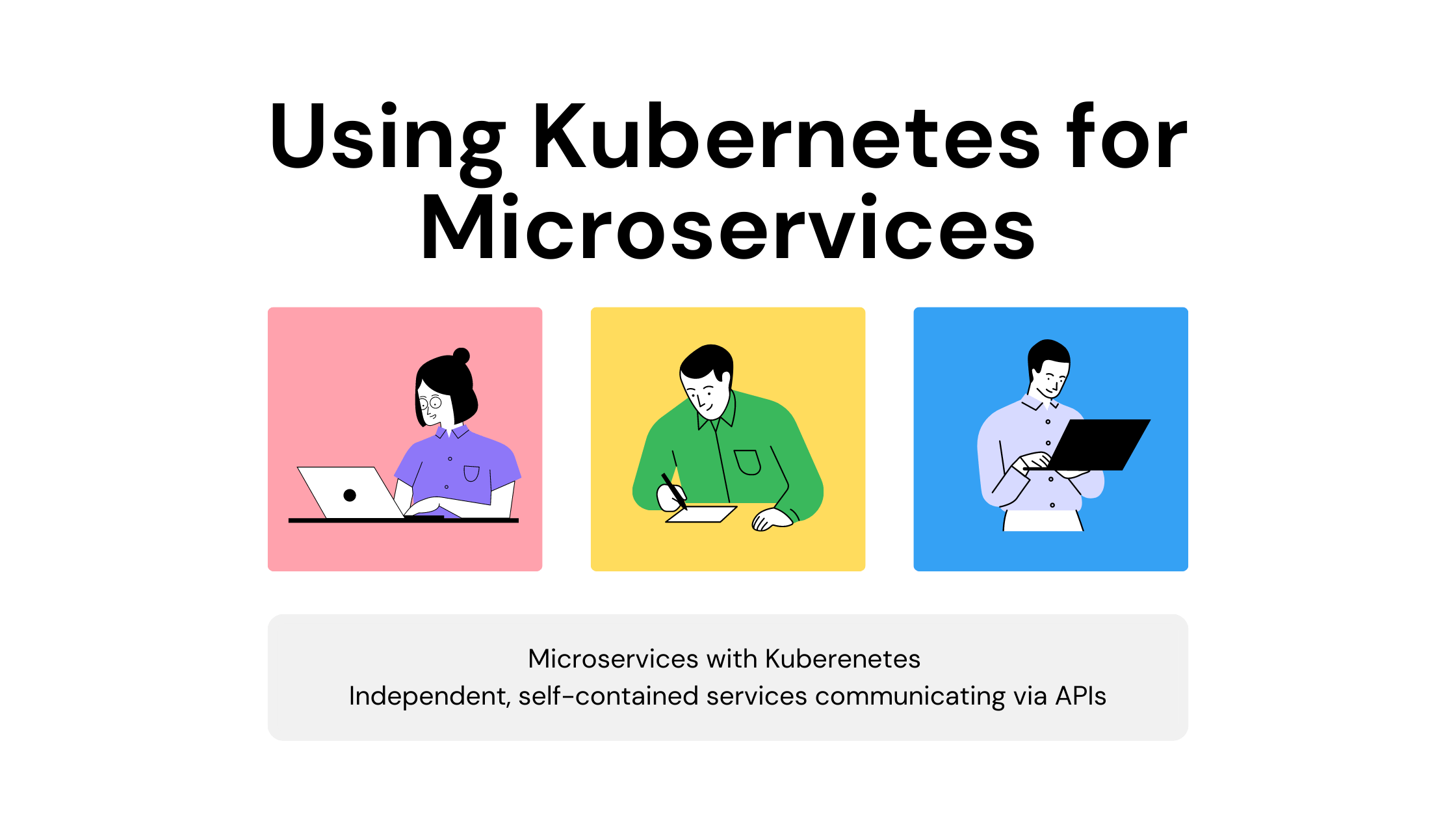In today’s fast-paced world, deploying applications efficiently and reliably is crucial for the success of any business. With the rise of cloud computing, Kubernetes has emerged as a leading platform for container orchestration.
In this guide, we will explore how to deploy your applications on AWS Elastic Kubernetes Service (EKS), a fully managed Kubernetes service provided by Amazon Web Services (AWS). By the end of this article, you will have a solid understanding of the key components of Kubernetes on AWS EKS and be equipped with the knowledge to deploy your applications with ease.
Key components of Kubernetes on AWS EKS
Before we dive into the deployment process, let’s familiarize ourselves with the key components of Kubernetes on AWS EKS.
- EKS Control Plane: The control plane is responsible for managing the EKS cluster and its associated resources. It consists of multiple components, including the API server, scheduler, and controller manager. These components work together to ensure the proper functioning of the cluster.
- Worker Nodes: Worker nodes are the machines where your applications run. They are responsible for executing the containers and communicating with the control plane. Each worker node runs a Kubernetes agent called the kubelet, which interacts with the control plane and manages the containers.
- EKS Networking: Networking in EKS is powered by AWS VPC (Virtual Private Cloud) and provides secure communication between the control plane and worker nodes. It also allows your applications to communicate with other AWS services and external resources.
Setting up an EKS cluster on AWS – Command example
Now that we have a basic understanding of the key components, let’s walk through the process of setting up an EKS cluster on AWS.
To create an EKS cluster, we will use the AWS Command Line Interface (CLI). Make sure you have the AWS CLI installed and configured on your local machine before proceeding.
- Create an Amazon EKS cluster: Run the following command to create a new EKS cluster:
aws eks create-cluster --name my-eks-cluster --version 1.21 --role-arn arn:aws:iam::123456789012:role/eks-cluster-role --resources-vpc-config subnetIds=subnet-12345678,subnet-23456789,securityGroupIds=sg-12345678
Replace my-eks-cluster with your desired cluster name. Specify the appropriate role-arn and resources-vpc-config values based on your AWS account configuration.
- Configure kubectl: After the cluster is created, configure
kubectlto communicate with the cluster. Run the following command:
aws eks update-kubeconfig --name my-eks-cluster
This command retrieves the necessary credentials and updates your kubeconfig file, which is used by kubectl to interact with the cluster.
- Verify cluster status: To ensure that your cluster is up and running, run the following command:
kubectl get nodes
You should see a list of worker nodes in the output, indicating that your cluster is ready for deployment.
Scaling and managing your application on AWS EKS – Command example
Once your EKS cluster is up and running, you may need to scale your application based on demand or manage its lifecycle. Kubernetes provides powerful capabilities for scaling and managing applications, and AWS EKS makes it seamless to leverage these features.
- Scaling your application: To scale your application, you can use the
kubectlcommand-line tool. For example, to scale a deployment namedmy-appto three replicas, run the following command:
kubectl scale deployment my-app --replicas=3
This command instructs Kubernetes to create three replicas of the my-app deployment, effectively scaling your application to meet increased demand.
- Updating your application: To update your application, you can use the
kubectlcommand-line tool along with a new version of your container image. For example, to update a deployment namedmy-appwith a new version of the container imagemyregistry/my-app:v2, run the following command:
kubectl set image deployment/my-app my-app=myregistry/my-app:v2
This command updates the container image of the my-app deployment, rolling out the new version to the running pods.
- Monitoring your application: Monitoring is an essential aspect of application deployment. AWS EKS integrates with various monitoring tools, such as Amazon CloudWatch and Kubernetes-native monitoring solutions like Prometheus and Grafana. These tools provide insights into the performance and health of your application, allowing you to proactively identify and address any issues.
Deploying your application on AWS EKS using kubectl – Command example
Now that we have covered the essential steps for setting up an EKS cluster and managing your application, let’s explore how to deploy your application on AWS EKS using the kubectl command-line tool.
- Create a deployment: The first step in deploying your application is to create a deployment object. The deployment defines the desired state of your application and manages the lifecycle of the application pods. Here’s an example of creating a deployment for a web application:
apiVersion: apps/v1
kind: Deployment
metadata:
name: my-app
spec:
replicas: 2
selector:
matchLabels:
app: my-app
template:
metadata:
labels:
app: my-app
spec:
containers:
- name: my-app
image: myregistry/my-app:v1
ports:
- containerPort: 80
Save the above YAML manifest to a file named deployment.yaml, and run the following command to create the deployment:
kubectl apply -f deployment.yaml
- Expose the deployment: After creating the deployment, you need to expose it to the outside world. This is done by creating a Kubernetes service object. The service defines a stable network endpoint for accessing your application. Here’s an example of creating a service for the
my-appdeployment:
apiVersion: v1
kind: Service
metadata:
name: my-app-service
spec:
selector:
app: my-app
ports:
- protocol: TCP
port: 80
targetPort: 80
type: LoadBalancer
Save the above YAML manifest to a file named service.yaml, and run the following command to create the service:
kubectl apply -f service.yaml
- Verify the deployment: To ensure that your application is deployed successfully, run the following command to get the status of the deployment:
kubectl get deployment my-app
You should see the desired number of replicas and their current status. Additionally, you can use the following command to get the public URL of your application:
kubectl get service my-app-service
This will display the external endpoint through which you can access your application.
Best practices for application deployment with Kubernetes on AWS EKS
Deploying applications with Kubernetes on AWS EKS can be a complex process, but following best practices can simplify and streamline the deployment process. Here are some key best practices to consider:
- Infrastructure as Code: Use infrastructure as code tools like AWS CloudFormation or Terraform to manage your EKS cluster and associated resources. This ensures that your infrastructure is version-controlled and reproducible.
- Resource Optimization: Optimize your resource usage by leveraging Kubernetes features such as autoscaling based on resource utilization and right-sizing your containers. This helps maximize cost efficiency and performance.
- Security: Implement security best practices, such as using IAM roles for worker nodes, enabling encryption at rest and in transit, and regularly patching your cluster and applications.
- Monitoring and Logging: Set up comprehensive monitoring and logging solutions to gain visibility into your application’s performance, troubleshoot issues, and identify opportunities for optimization.
By following these best practices, you can ensure a smooth and efficient application deployment process on AWS EKS.
In conclusion, deploying your applications on AWS EKS using Kubernetes provides a robust and scalable solution. By understanding the key components, setting up an EKS cluster, scaling and managing your application, and following best practices, you can master the art of application deployment with Kubernetes on AWS EKS.
So, take this guide as your starting point and dive into the world of Kubernetes to unlock the full potential of your applications.
Happy Deployment!






